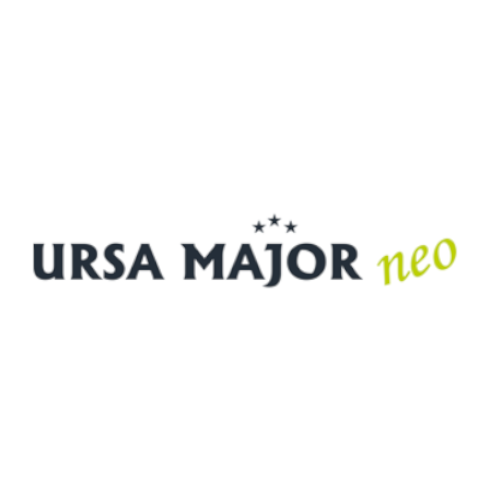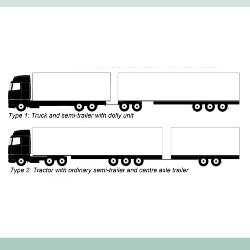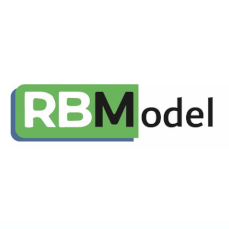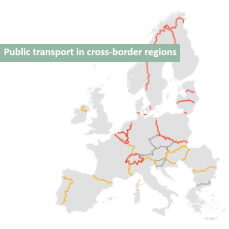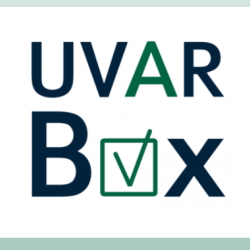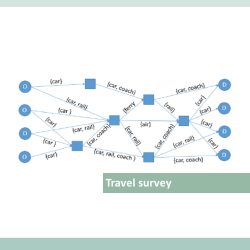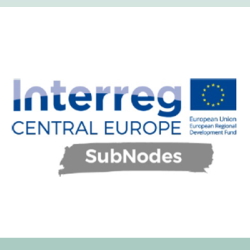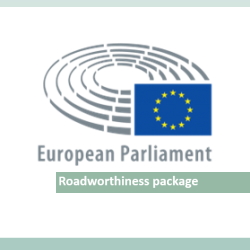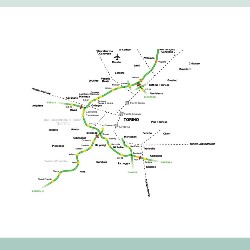- All
- African projects
- assessment
- assessment selected projects
- Assessment selected projects 2
- Assessment selected projects 3
- Assessment selected projects 4
- ASTRA
- Cost Benefit Analysis
- Electric mobility and ITS
- MOMOS
- planning
- planning selected projects
- planning selected projects 2
- planning selected projects 3
- planning selected projects 4
- planning selected projects 5
- projects
- Railways projects
- research
- research selected projects
- research selected projects 2
- research selected projects 3
- studies
- studies selected projects 1
- studies selected projects 2
- studies selected projects 3
- studies selected projects 4
- studies selected projects 5
- TRTingegneria
- TRUST
- urban mobility
- Analysis of ITS applications and solutions at logistics nodes Ursa Major neo project is co-financed by the Connecting Europe Facility of the European Union. The main goal of UMneo is to identify the best ITS solutions to interconnect the logistic nodes (ports and freight villages) and arches (road networks) for sharing each other information about traffic conditions or allow operators to book in advance some specific services. ITS (Intelligent Transport Systems) are known to be effective for several applications in the entire supply chain, e.g. for reducing congestions at gate terminals or along the road, for saving time and costs, for reducing the environmental footprint of logistics activities, etc. The Italian partners involved in UMneo are the ports of La Spezia, Livorno, Ravenna, Trieste, Venezia, the freight village of Verona and the road network operators ANAS S.p.A, Autovie Venete S.p.A., Autobrennero S.p.A. and Autostrade per l’Italia S.p.A. TRT was commissioned by RAM to describe the state of the art about ITS services and systems applied or planned in ports and freight villages infrastructures involved in the Ursa Major Neo project, pointing out the most relevant best practices. Final results come both from desk-analysis and specific interviews that TRT performed with the involved partners. For more information: Ursa Major Neo project Objectives of the Ursa Major project on NeoAutobrennero S.p.A. website
- Study on the implementation of the amendments to Directive 96/53/EC amended by Directive 719/2015 (implementation of vehicle weight and dimension Directive) Directive 96/53/EC regulates the maximum authorised dimensions in national and international traffic and the maximum authorised weights in international traffic, both of passenger and freight vehicles. The evolving market, technological development and new international emission targets has required a review od the Directive in 2015 by Directive (EU) 719/2015. The amendments introduced concern: the installation of retractable or foldable aerodynamic devices to the rear of the vehicles; alternatively fueled vehicles to increase the maximum weight; the use of aerodynamic cabs with safer profiles; the increase in weight for passenger buses; the carriage of 45-feet containers and 45-feet swap bodies as part of intermodal transport operations. The objective of this study is to provide input to the Commission report, on the implementation of the amendments to Directive (EU) 2015/719 taking into account the specific characteristics of certain market segments. Five segments has been investigated by TRT in partnership with COWI: Hight Capacity Vehicles (HCV); Car carrier vehicles; Vehicles with equipment (crane, lift etc.); Vehicle for the transport of indivisible loads; Transport of military equipment.
- Implementing a multimodal transport network model of the Rail Baltica Corridor and appraisal of the passenger and freight transport activity onto the Corridor Rail Baltica Global Project is the Baltic part of a rail transport infrastructure project with a goal to integrate the Baltic States in the European rail network. The expected core outcome is a fully interoperable railway line of more than 870 km in length meant for both passenger and freight transport as part of TEN-T Core Network (North Sea – Baltic Corridor). A first phase of the study, carried out in 2021-22 consisted of two main activities. The first activity was the implementation of a multimodal transport network model of the Rail Baltica Corridor covering in some detail (NUTS3 or even sub-NUTS3 zones) the area of the three Baltic countries (Estonia, Latvia, Lithuania) and of neighbouring regions of Finland and Poland plus the rest of Europe and world regions in a progressively more aggregated fashion. The transport model is a four-stage model, dealing with the estimation of generated demand, distribution, mode split and assignment to a multimodal network. The model covers both passenger and freight activity of interest for the planned rail infrastructure. All transport modes competing with rail are represented. Different rail services are explicitly modelled both for passenger (including Night-Train services) and for freight. Supporting the implementation of the model, a Stated Preference surveys was carried out to estimate parameters for the passenger demand model. The second activity of the first part of the study was the application of the model to estimate the passenger and freight demand onto the corridor in several future time thresholds, corresponding to different stages of the implementation of the infrastructure, and under three scenarios: a “do-nothing” scenario without the new infrastructure. a “Base scenario” with the new infrastructure. an alternative scenarios where alternative assumptions are made regarding intermodal rail transport services and the application of measures related to the EC Green Deal transport policy is considered. The application of the model provided several outputs ranging from aggregated statistics to link-based traffic and including impact indicators on energy consumption and emissions. The model was delivered along with the outcomes of the study and a training course focused on the use of the model was held for staff of Rail Baltica AS. This first phase of study was carried out by TRT with the support of PTV (DE), MDS Transmodal (UK), CSE COE (LV). TRT was the coordinator of the study and was responsible for developing the demand model (passenger and freight) as well as the Stated Preference survey. In a second phase (2024), some aspects of the model have been revised in order to improve the level of detail of the analysis and make the interaction with the model easier. In particular, the number of zones has been increased so that zones do not include more than one (non-urban) regional station. Following the revisions implemented, at the end of the second phase the model is recalibrated. The activities of […]
- Study on “Providing public transport in cross-border regions. Mapping of existing services and related legal obstacles” In the EU it is widely acknowledged that border and cross-border regions need particular attention. About 30% of the EU population live in regions close to internal border. Despite the single market, cross-border activities still face bottlenecks hampering businesses and citizens. Cross-border transport is one central means to facilitate cross-border activities. Despite the importance of cross-border public transport to link regions across borders, to date, no European-wide and comprehensive inventory of cross-border public transport (CBPT) services exists. Thus, even the actual number of services is impossible to estimate. In view of this role of CBPT, this study: provides a comprehensive inventory of existing CBPT services along the internal borders of the European Economic Area and a sound and profound analysis thereof; develops an inventory of obstacles to the implementation of CBPT and further analyse them and possible solutions; identifies best practices with relevant case studies and develop a toolbox to support planners and implementers. Within the project TRT is responsible for: the analysis of cross-border rail transport services; the development of a web viewer to map existing services for all transport modes; the analysis of 3 case studies on the business models of cross-border public transport services.
- User-friendly information tool on urban and regional vehicle access regulation schemes UVAR-BOX is the EU project which has been established to tackle fragmented or unavailable information on up-to-date and relevant UVARs (Urban Vehicle Access Regulations) policies in European cities. The 24-month project successfully ended in 2023 and developed the Datex II standard for UVARs and a tool, the UVAR-BOX, to facilitate the input of UVAR data into the Datex II standard, which can be read automatically by navigation systems and mobile applications available to European drivers. UVAR policies pursue various objectives such as improving air quality, livability and reducing congestion. The project aimed to harmonize and disseminate information on UVAR policies in fleet management tools and navigation devices. Its widespread application and use will support both road users to plan journeys across the EU, and local authorities and Member States to set up standardized communication procedures in line with European regulations on the dissemination of mobility-related information (ITS directive and single digital gateway). TRT, as part of a large consortium, had the role of Italian Country Coach to support Italian public administrations in this digitization process. For more information Project brochure – Link Country Coaches web page – Website DATEX II: the standard for traffic and mobility information – Video
- A survey in 20 European cities on behalf of the JRC of the European Commission to explore the impacts of COVID-19 outbreak on urban transport The Covid-19 crisis triggered major changes in users’ mobility preferences in light of health risks and restrictions, as well as changes in terms of different working patterns and economic activity that have impacted on the demand of urban mobility. The study was aimed at collecting data through a survey in 20 EU cities, in order to understand individuals’ urban mobility patterns in light of the changes introduced by the Covid-19 pandemic. In specific, the exercise analysed how the health crisis impacted on elements like: mode choice, transport costs, trip purposes, frequency of movements, external factors driving the transport choice. The impact of disruptive elements, such as teleworking was also explored. TRT was responsible for the research, which was managed by IPSOS. The 20 cities were distributed in 11 EU countries; they included large metropolitan areas as well as medium cities with different levels of diffusion of the Covid-19 virus, different role of public transport and bike and different level of road congestion. The survey involved 500 individuals in each city. Two different methodologies were used to collect responses: a CAWI questionnaire and a CATI questionnaire. The combination of the two methods ensured an affordable and representative sample.
- Technical assistance for study and research activities of the Interreg Project «SUBNODES» The project SUBNODES (Connecting the hinterland via Sub-nodes to the TEN-T core network) is funded by the Interreg programme Central Europe, which targets at enhancing the links of the hinterland with the main hubs of the TEN-T through regional centres, the so-called «SUBNODES». The aim of the technical assistance is support the preparation of the Action Plan of the Lombardy Region to improve the connections of SUBNODE cities of Brescia, Bergamo, Varese and Como with the airports of Malpensa, Linate and Orio al Serio, core nodes of the TEN-T in Lombardy. The technical assistance activity to deliver the Action Plan consists of four phases: Analysis of the current situation of the transport network and of the links of the subnodes with their catchment area and towards the main nodes of the TEN-T. The analysis delineate the baseline to identify new measures and actions Elaboration of a SWOT analysis Identifications of solutions to specific problems to improve passengers transport services Recommendations for actions development The technical assistance also supports stakeholders consultation and the presentation of the Action Plan in two publications.
- Roadworthiness package: Legal transposition, concrete functioning and readiness for the future The roadworthiness package was adopted in 2014 and is composed of three directives, focused respectively on periodic roadworthiness tests (Directive 2014/45/EU); vehicle registration documents (Directive 2014/46/EU); and technical roadside inspections of commercial vehicles (Directive 2014/47/EU). The objectives of this research paper are: to check how Member States have transposed the package from the road safety perspective and to determine whether the transposition has effectively led to the application of common standards; to check whether the national measures transposing the safety provisions of the package are sufficient and adequately shaped to achieve its safety objectives; The analysis of the legal transposition by Member States was performed by considering the national legal measures transposing the roadworthiness package as they had been notified to the EC (more than 450 documents from 27 Member States) Direct survey among responsible authorities at national level involved 23 different organization from 21 MS completed by 7 direct interview to ministries and other national authorities. TRT had lead a multidisciplinary international consortium made by OIR, Arcadia International and M&E Factory, further supported by CORTE Road transport is the most common means of transport in the EU, as well as the most important cause of accidents. In this respect, the European Union has developed a transport policy oriented towards safety and security through common standards and rules. A roadworthiness package was adopted at European level in 2014, aimed at improving road safety through common rules on periodic roadworthiness tests for motor vehicles and their trailers (Directive 2014/45/EU), vehicle registration documents (Directive 2014/46/EU), and roadside inspections of commercial vehicles (Directive 2014/47/EU). The purpose of this European implementation assessment is to check whether the transposition of safety measures included in the package has led to common standards in practice, as well as to assess the current functioning of the exchange of information and the mutual recognition of technical controls between Member States. For more information Implementation of the roadworthiness package: European implementation assessment, the study carried out by TRT. Go to the European Parliament website
- Assistance for the highways A21 – A5/SATT concession tender The project had the objective of verifying how the proposal for a new tolling system, along the highwat sections subject to the concession tender, was such as to ensure the protection of consumer rights, encourage the economic growth of the territory, and be oriented towards environmental protection. The object of the concession tender includes the highway sections SATAP A21 and ATIVA A5/SATT (Turin Ring Road Highway System). TRT’s work focused on a series of elements and consequent impact assessments related to the introduction of an innovative tolling system involving the SATT network (currently an open freeway system) and also partially involving the A5 and A21 highways. The elements of the new tolling system considered were: Implementation of a “free flow” system to replace the current open system with barriers User information system Choice of payment method and service provider Agreements with local realities to promote territory development Redevelopment of barriers Development of service areas

